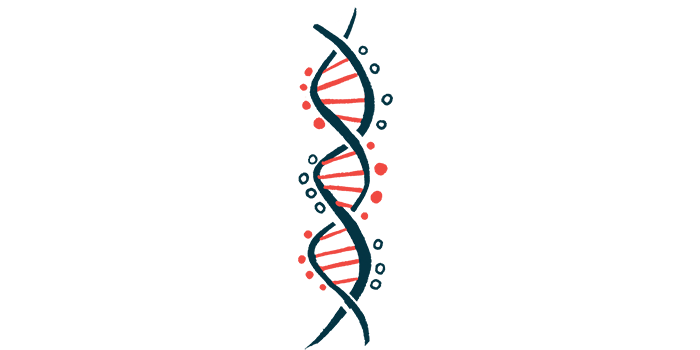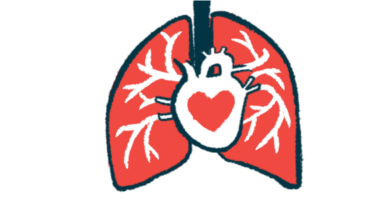New genetic clues connect sarcoidosis with lung cancer risk
Study finds 12 shared genes tied to inflammation, fibrosis, and Wnt signaling

Researchers have identified 12 genes linked to chronic inflammation, immune dysregulation, and lung scarring that appear to be shared across both sarcoidosis and lung cancer.
These genes were also tied to the Wnt signaling pathway, a system that helps regulate immune response and cell growth.
Based on these findings, the diabetes medication metformin emerged as a potential drug candidate for both conditions. This “provides an innovative drug repositioning strategy, bridging genetic insights with treatment opportunities,” the researchers wrote.
The findings were described in the study “Genetic overlap between sarcoidosis and lung cancer: a combined in silico and in vitro approach,” which was published in Hereditas.
Understanding sarcoidosis and its possible link to lung cancer
Sarcoidosis is marked by inflammation and the formation of granulomas, small clumps of inflammatory cells, in different tissues and organs. It most often affects the lungs, leading to symptoms like shortness of breath and cough.
Several studies have suggested people with sarcoidosis may face a higher chance of developing lung cancer, possibly due to chronic inflammation and scarring. Imaging tests can also make it difficult at times to distinguish signs of sarcoidosis-related granulomas from those of primary lung cancer.
In this study, researchers in India set out to identify genes that may be commonly dysregulated in sarcoidosis and lung cancer and to explore what those shared changes might mean clinically.
Using a large gene activity database, the team searched for genes that were differentially activated in sarcoidosis and in lung adenocarcinoma, a type of lung cancer often linked to granulomas-related lung diseases.
Overall, the researchers found 120 genes with distinct levels of activity in sarcoidosis compared with healthy individuals, and 1,256 differentially activated genes between tumor and non-tumor regions of people with lung adenocarcinoma.
In total, 12 genes showed different activity levels in both conditions when compared with their respective control samples.
Four of these genes — SALL4, WNT10A, RASAL1, CAMK2B — were significantly more active, while seven — GADD45B, KLF4, OLR1, CSF3, WIF1, RAMP3, and AGER — showed reduced activity in both sarcoidosis and lung adenocarcinoma as compared with the respective controls. PRKAG3 was significantly activated in sarcoidosis but suppressed in lung adenocarcinoma.
These findings support the rationale for drug repurposing and the development of targeted therapies for patients with overlapping disease profiles or those at increased risk of [lung cancer] progression from sarcoidosis.
Further analyses indicated these genes are tied to the Wnt signaling pathway, whose dysregulation is linked to abnormal immune responses, epithelial cell issues, and fibrosis (scarring).
These genes were also enriched in epithelial cells, the cells that line surfaces throughout the body, including the respiratory tract. These cells “are major contributors to inflammation, fibrosis, and tissue remodeling, suggesting their involvement in sarcoidosis [development], where these processes play a central role in disease progression,” the researchers wrote. “Similarly, in [lung cancer], epithelial cells can undergo malignant transformation.”
Searching for drugs that target the shared genes
The researchers then worked to identify therapies that could target the 12 shared genes found in both sarcoidosis and lung cancer. Their analysis pointed to metformin, a medication approved to control high blood sugar levels in people with type 2 diabetes, as the most promising candidate.
Metformin was found to interact with PRKAG3, the protein coded by the PRKAG3 gene. The therapy is also known to influence the Wnt signaling pathway through AMPK-dependent and independent mechanisms. AMPK is an enzyme that acts as a cellular energy sensor.
Studies in lab-grown human cells showed that metformin selectively reduced the survival of cells derived from lung adenocarcinoma and cervical cancer, while normal lung fibroblasts were only minimally affected.
Lung fibroblasts are cells that help support and maintain lung tissue, though they can also contribute to lung fibrosis when overly activated.
“These results suggest that metformin exhibits selective [cellular toxicity] toward cancer cells while remaining comparatively non-toxic to normal human cells,” the researchers wrote.
Additionally, metformin was shown to reduce colony formation in lung adenocarcinoma and cervical cancer cells. Colony formation is a process in which cells grow into a visible cluster, called a colony. According to the researchers, this means the compound might have a long-term effect on the growth of tumor cells.
“These findings support the rationale for drug repurposing and the development of targeted therapies for patients with overlapping disease profiles or those at increased risk of [lung cancer] progression from sarcoidosis,” the researchers wrote.







